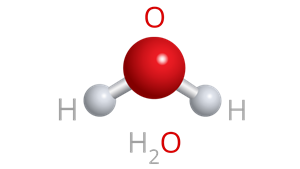
PUMPA - SMART LEARNING
எங்கள் ஆசிரியர்களுடன் 1-ஆன்-1 ஆலோசனை நேரத்தைப் பெறுங்கள். டாப்பர் ஆவதற்கு நாங்கள் பயிற்சி அளிப்போம்
Book Free DemoDuring the water cycle, the water evaporates from the lakes, rivers, and oceans form the gaseous state. The rain that returns the water back to the earth is liquid state. The snow on mountains and polar ice caps form the solid-state.
The total amount of water on the earth is kept constant even though we are using it, is due to the continuous cycling of water among its three forms.
The total amount of water on the earth is kept constant even though we are using it, is due to the continuous cycling of water among its three forms.
The composition of water:
Water is a chemical substances that is transparent, tasteless, odourless and nearly colourless. It is composed of two atoms of hydrogen combined with one atom of oxygen. Hence its molecular formula is .

But the physical composition of water changes from place to place. Water can be transparent or cloudy, fresh or salty, oxygenated or deoxygenated. The quantity of salt in the water is known as salinity. Based on the salinity of water, water can be classified into three main categories such as freshwater, brackish water and sea water.
The freshwater contains 0.05% to 1% of salt water. The brackish water has up to 3% of water, and the seawater contains more than 3% of salt. The water found in the oceans is composed of many substances. They include salts such as sodium chloride, magnesium chloride and calcium chloride.
Water freezes at 0° Celsius at normal pressure. Every year march 22nd is observed as the world water day.
Measuring water:
Water is measured in litre and milliliter. It is also measured as gallons as gallon is a volume of liquids.
1 Gallon = 3.785 litre.
The level of water in the reservoirs is measured in TMC/feet. Water released from the dams is measured in cusec (cubic feet/sec).
Reference:
https://www.shutterstock.com/image-vector/h2o-water-molecule-model-chemical-formula-1183444921